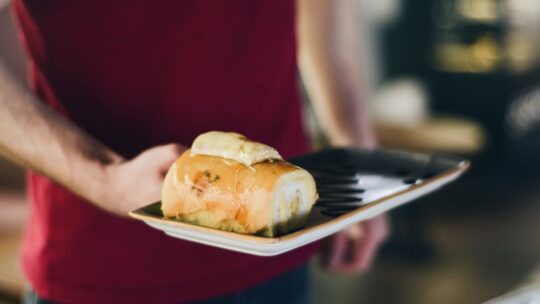
As the name suggests, Meals-Ready-To-Eat, commonly known as MRE, are complete meals ready for consumption. You might be thinking that foods such as pizza and other takeout meals are also ready to eat. However, the difference is that MREs are pre-packaged foods with a long shelf life. MREs require very little preparation work, and once you consume the meal, it can sustain an individual for a time. MREs are easy to pack, carry, and eat while on the fly.
History
According to expert Bugout Bill, after a few hits and misses, the US government introduced MREs in 1980 as military food rations. Rations that were superior in nutrition and flavor compared to previous food rations.
At that time, MREs were the exclusive property of the government and not for civilians. However, the same manufacturers produce civilian MRE brands as a commercial alternative to military MREs.
Composition of MREs
One MRE is equivalent to one full meal high in nutrition value. Each MRE bag contains various drink and food items that provide your body with 1250 calories: 51% carbs, 36% fat, and 13% protein. You can be confident that you will be satisfied with the ostensibly small portion of MRE out of a packet. Munch on some goodies from Muniq– containing ingredients which guarantee a healthy gut.
Though the menu may vary slightly from year to year, the following is a general listing of what you should expect to find in an MRE:
- Entrée: This is the main dish, and maybe something like beef stew or chili with beans.
- Starch: This may include crackers, tortillas, rice, cornbread, and other starchy ingredients.
- Drinks: Energy-giving beverages, such as lemon drinks, dairy shakes, coffee, electrolytes, and cocoa.
- Desserts: Cookies, biscuits, pound cakes, corn nuts, etc.
- Spread: These include fruit jams, cheese spread, jelly, or peanut butter.
- Candy: These include tootsie rolls, skittles, and so on.
- Flameless Heaters: Cooking heat as a source long enough to warm your entrée, side dish, and beverages.
- Accessories: Eating utensils and seasonings, such as a spoon, salt, sugar, pepper, a napkin, wet wipes, and water.
Storage
MRE packaging is a layered combination of aluminum foil, polyester, and polypropylene that can withstand exposure to unfamiliar elements and rough conditions.
The best way to preserve your MREs is to store them in a cool and dry rodent-free environment, such as a cool closet or a dry basement. If the surrounding is convenient for rodent fellows, store your MREs in a tightly covered metal container or tough plastic storage boxes.
Shelf Life of MREs
MREs have an average shelf life of three years. However, this shelf life can vary depending on how well you store the MRE. If well stored, an MRE can last up to 15 years without losing its nutritional value or taste.
Why Buy MREs?

The extended shelf life and high nutritional value of MREs make them a suitable option for extreme conditions. For instance:
- Natural disasters: MREs can sustain survivors in the aftermath of catastrophic events, such as tsunamis, earthquakes, wildfires, and so on, where it may be impossible to cook meals.
- Quarantines: MREs can also come in handy during quarantines where your safety depends on isolation from the others to protect you and yours from infection.
- Camping: MREs can also serve well during camping, mountain climbing, and hunting expeditions.
- Civil Unrest: During periods of civil unrest and all-out war, having a stock of MREs will save you the trouble of venturing out in search of food.
Conclusion

For a long time, many people have held onto the misconception that MREs are food for military personnel and their taste is not flavorful. However, as you are probably seeing, there is more to MREs than what people know.























